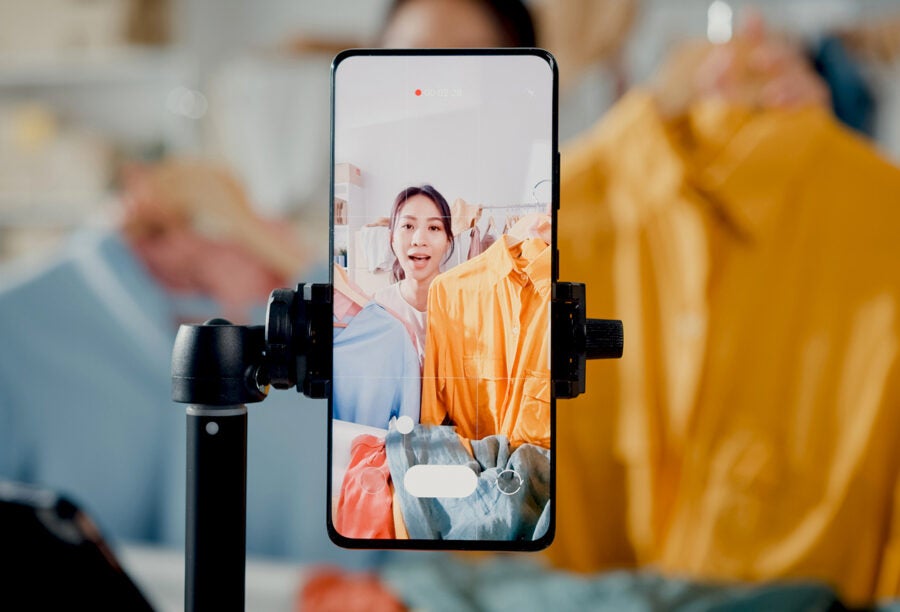If you’re not selling on social media, maybe you should be.
Livestream commerce, in which brands sell their products to online audiences in real time, is one of the hottest trends in retail. The format is growing in popularity, accounting for $200 billion in sales in China and $11 billion in the United States in 2020. Those numbers are only expected to climb.
“Livestream commerce is fast becoming a medium of choice,” said Wharton marketing professor Thomas S. Robertson, who is also academic director of the Jay H. Baker Retailing Center.
In an article he wrote for Harvard Business Review, titled “Selling on TikTok and Taobao,” Robertson examines the rise of livestream commerce and offers guidance for companies that want to jump on the trend. He spoke with Knowledge at Wharton to share some insights from the article and explain why livestream commerce is a challenge for both retailers and the social media platforms they rely on to run their events.
Why is livestream commerce becoming so popular?
I think we have to look at the evolution of online. It started with text, and over time that became rather boring. Text then became accompanied by imagery, and that was a step forward in building audience engagement. The next step was video, which turns out to be more powerful than imagery in building engagement. After that came live video or livestream. The ability to buy from the stream was added, and that’s what this article in Harvard Business Review is about. That’s where we’ve arrived in terms of the evolution of online. It’s become an important means of going to market and selling with certain audiences and under certain conditions.
Did the COVID-19 pandemic spur this format? Many retail stores closed during the height of the pandemic and had to come up with new ways to sell merchandise.
I think it’s primarily the changing technology and changing generations. The pandemic would have been a stimulus, but it remains to be seen how long lasting that effect will be. The question is, will people go back to stores? They are, but it will never go back to where it was in 2019. About 85% of shopping is now in store, and 15% is online — some of that is livestream commerce. It’s my opinion that it won’t go back to 100%. Why should it? People have gotten used to online shopping.
“If you go back to the beginning of online shopping, it was a solitary experience, whereas livestream commerce is very much a communal experience.”
What is the role of the social media influencer in livestream sales?
One of the important factors of livestream commerce is the influencer. They can be a professional influencer, or the influencer may be a salesperson in a store. Sometimes they have enormous followings, so they guide the discussions and encourage people to buy. If you go back to the beginning of online shopping, it was a solitary experience, whereas livestream commerce is very much a communal experience. People are relating to one another, so you’re not alone. You may not know the people [in the livestream] shopping with you, but you identify with them because you have similar interests. Other people buy, and you feel it’s legitimate and will do it as well. There’s a social pressure of sorts in livestream commerce events.
If we look at the literature, we’ve always known that personal influence is one of the most important factors in making decisions. It’s often friends and neighbors who make you aware of something and encourage you to buy. Switch that over to livestream commerce, and you have a form of personal influence coming from the influencer and from the other people who are shopping.
Is this changing the business model for social media platforms that provide the channels for livestream commerce?
It depends on the platform. If we look at META, Facebook Live is no longer going to exist. They are switching it over to Instagram and Reels, which is like TikTok. TikTok has been so successful, and the challenge for Meta is that Facebook and Instagram weren’t designed as a short-form video experience. So, how do you compete with TikTok? Facebook said let’s give that to Reels and let Reels carry the banner to compete with TikTok. It’s changing the business model, for sure. Some platforms will be in better positions than others.
“Advertisers love the younger audience.”
It’s definitely a challenge, even for companies that were built for digital shopping. [Television network] QVC has been reinventing themselves to be online more and to engage in livestream commerce — with some success. Their problem is that their audience is more mature than a TikTok audience. And advertisers love the younger audience.
Your article mentions how livestream commerce is maturing faster in China than in the United States. In China, it already accounts for 10% of online shopping and is projected to grow to 25% by next year. Why is the Chinese market so different from the U.S.?
I think the biggest difference is that they have integrated platforms. Taobao was designed for consumers to buy online and be able to pay for it without leaving the stream. We don’t have an integrated app at the present time in the U.S. It’s moving in that direction. I’m sure we’ll get there. There are companies trying to develop it right now. In fact, I have one company coming into my class this fall to talk about it.
What should brands be thinking about as they jump into livestream commerce?
I would start with the notion that there is no magic marketing bullet. This is part of your arsenal. You have to integrate livestream commerce with your other marketing strategies and tactics. How does it fit in?
“There is no magic marketing bullet … you have to integrate livestream commerce with your other marketing strategies and tactics.”
I recognize that, as I talk to some of these major brands, it took more than one experience to get it right. There’s a learning curve involved. It does, indeed, depend on the product category. In talking to Ferragamo, for example, they made the good point that you can’t just show up in the store with a camera for your existing customers. You can’t do that for a luxury good. You have to have a livestream commerce event that’s compatible with the prestige and the price of the item you’re trying to sell. You’re going to have a different feel, use different influencers, and have different expectations about how many people will buy. If you’re Ferragamo or Jimmy Choo, you’re trying to sell a few items to a limited market segment.
You have to choose the right platform, and you have to choose the right influencer. Is it someone with a following, or a more specialized influencer who knows more about a specific category, such as cosmetics or a technology good?
You’ve also got to measure your success against expectations. You must test whether you are able to achieve those goals. It’s not just about making immediate sales. Maybe your objective is to reach new market segments, introduce new products, or create buzz for the brand. Given your expectations, you are going to track sales outcomes, social media mentions, likes and dislikes. But you would have determined before I run the event what your objectives were and how to evaluate outcomes.



